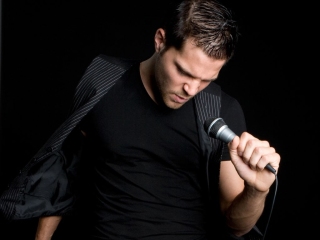


The holiday album Christmas appeared in late 2011, featuring duets with Shania Twain, the Puppini Sisters, and Thalía.

In 2010, Bublé released the six-song EP Special Delivery, as well as the expanded Crazy Love: Hollywood Edition. The studio effort Crazy Love, featuring duets with Sharon Jones and Ron Sexsmith, followed in October 2009, becoming his third multi-platinum album in the U.S. Bublé returned in 2009 with the live concert album/DVD Michael Bublé Meets Madison Square Garden, which documented the singer's first-ever performance at the storied New York City venue. The holiday-themed album Christmas followed in 2006, with the studio effort Call Me Irresponsible dropping in 2007. Later that year he released the live album Caught in the Act. In 2005, It's Time was a number one hit in Canada, Japan, Italy, and Australia, and made the Top Ten of both the U.K. He finished off 2003 with an EP of holiday material, Let It Snow, and began 2004 with the live CD/DVD set Come Fly with Me. His self-titled debut was released in early 2003 and featured jazzy takes on old standards like 'Fever' and 'The Way You Look Tonight,' as well as newer classics like Van Morrison's 'Moondance' and the Bee Gees' 'How Can You Mend a Broken Heart.' Further exposure ensued with a world tour and appearances on several television programs like NBC's Today Show, in which he sang a duet with host Katie Couric. The two Canadians began work on a major debut album that would incorporate Bublé's aptitude for pop standards into songs that spanned several decades. It wasn't long before Bublé was introduced to Grammy-winning producer David Foster and signed his first major recording contract with Reprise Records. While still in his teen years, he won the Canadian Youth Talent Search, released several independent albums, and performed in a musical revue titled Swing that traveled across the U.S. With his grandfather's assistance, Bublé soon learned a whole catalog of tunes and gained experience and exposure by singing as a guest with several local bands. As Bublé eagerly absorbed the recordings, he began to realize that he wanted to be a singer and that this style of music, virtually foreign to his own generation, was what he wanted to perform. Influenced by classic singers such as Frank Sinatra and Tony Bennett as well as more modern artists (most notably Harry Connick, Jr.), Bublé can believably sell old-school jazz standards and adult contemporary pop songs alike.īublé was introduced to the music of the swing era by his grandfather, who filled his ears with the sounds of the Mills Brothers, Ella Fitzgerald, Frank Sinatra, and others. With his supple vocal chops and nonchalant charisma, Michael Bublé became the preeminent neo-crooner of his generation.


 0 kommentar(er)
0 kommentar(er)
